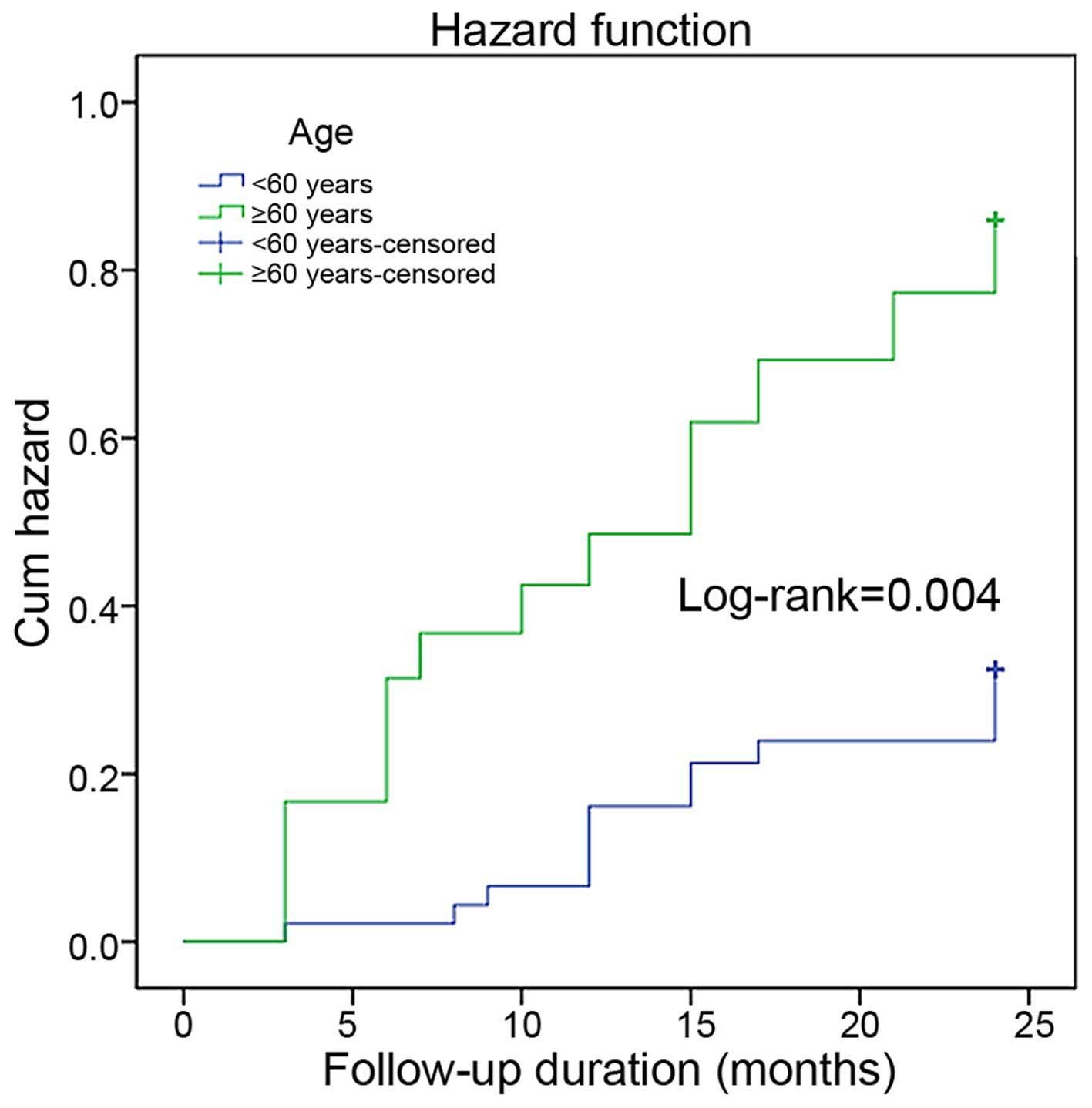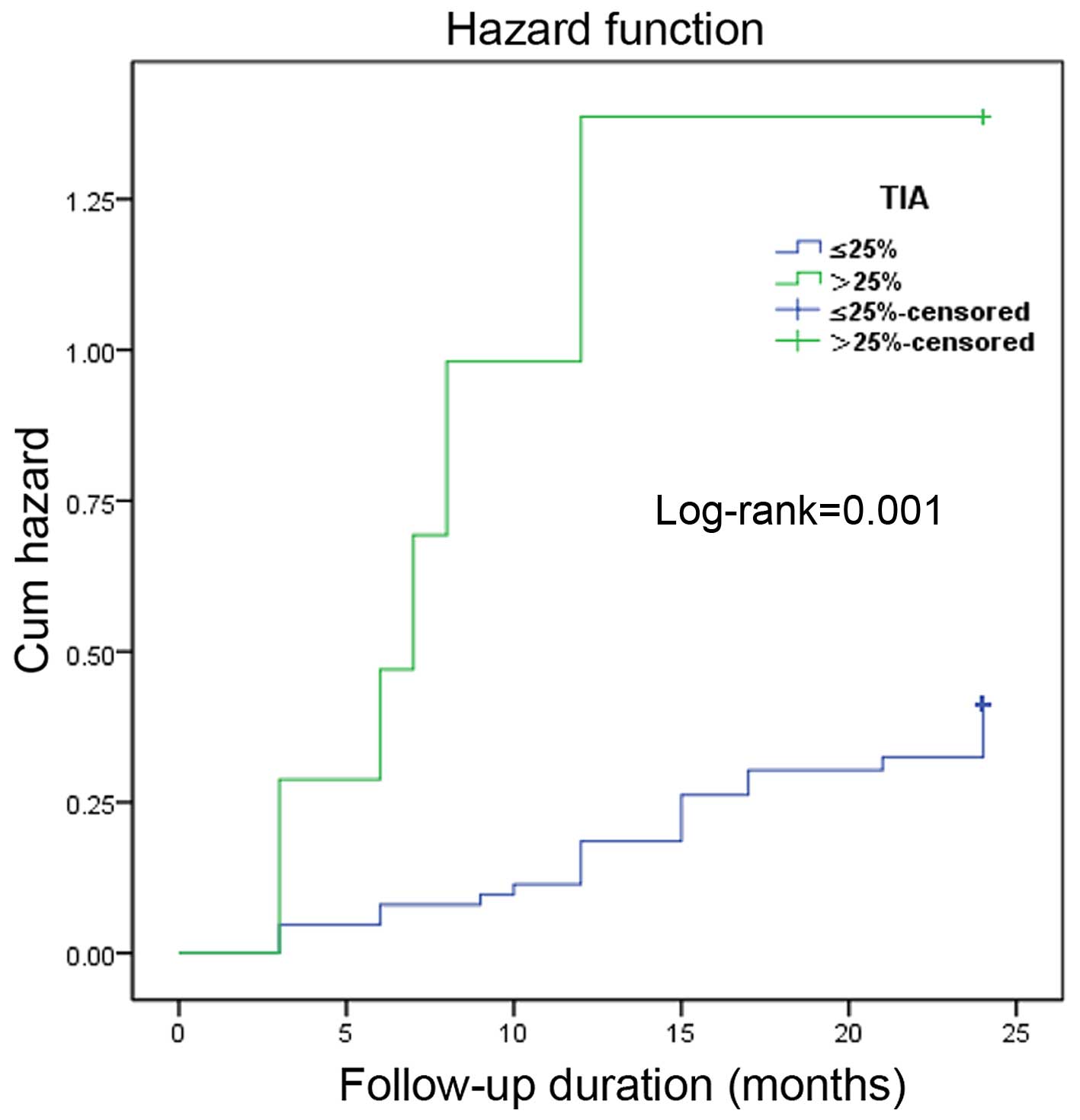|
1
|
Kerjaschki D and Farquhar MG: The
pathogenic antigen of Heymann nephritis is a membrane glycoprotein
of the renal proximal tubule brush border. Proc Natl Acad Sci USA.
79:5557–5561. 1982. View Article : Google Scholar : PubMed/NCBI
|
|
2
|
Heymann W, Hackel DB, Harwood S, Wilson SG
and Hunter JL: Production of nephrotic syndrome in rats by Freund's
adjuvants and rat kidney suspensions. Proc Soc Exp Biol Med.
100:660–664. 1959. View Article : Google Scholar : PubMed/NCBI
|
|
3
|
Zhou FD, Zhao MH, Zou WZ, Liu G and Wang
H: The changing spectrum of primary glomerular diseases within 15
years, A survey of 3331 patients in a single Chinese centre.
Nephrol Dial Transplant. 24:870–876. 2009. View Article : Google Scholar : PubMed/NCBI
|
|
4
|
Li LS and Liu ZH: Epidemiologic data of
renal diseases from a single unit in China: Analysis based on
13,519 renal biopsies. Kidney Int. 66:920–923. 2004. View Article : Google Scholar : PubMed/NCBI
|
|
5
|
Marx BE and Marx M: Prediction in
idiopathic membranous nephropathy. Kidney Int. 56:666–673. 1999.
View Article : Google Scholar : PubMed/NCBI
|
|
6
|
Hogan SL, Muller KE, Jennette JC and Falk
RJ: A review of therapeutic studies of idiopathic membranous
glomerulopathy. Am J Kidney Dis. 25:862–875. 1995. View Article : Google Scholar : PubMed/NCBI
|
|
7
|
Glassock RJ: Diagnosis and natural course
of membranous nephropathy. Semin Nephrol. 23:324–332. 2003.
View Article : Google Scholar : PubMed/NCBI
|
|
8
|
Wasserstein AG: Membranous
glomerulonephritis. J Am Soc Nephrol. 8:664–674. 1997.PubMed/NCBI
|
|
9
|
Coresh J, Turin TC, Matsushita K, Sang Y,
Ballew SH, Appel LJ, Arima H, Chadban SJ, Cirillo M, Djurdjev O, et
al: CKD Prognosis Consortium: Decline in estimated glomerular
filtration rate and subsequent risk of end-stage renal disease and
mortality. JAMA. 311:2518–2531. 2014. View Article : Google Scholar : PubMed/NCBI
|
|
10
|
Levey AS, Stevens LA, Schmid CH, Zhang YL,
Castro AF III, Feldman HI, Kusek JW, Eggers P, Van Lente F, Greene
T, et al: CKD-EPI (chronic kidney disease epidemiology
collaboration): A new equation to estimate glomerular filtration
rate. Ann Intern Med. 150:604–612. 2009. View Article : Google Scholar : PubMed/NCBI
|
|
11
|
Stokes MB, Valeri AM, Markowitz GS and
D'Agati VD: Cellular focal segmental glomerulosclerosis Clinical
and pathologic features. Kidney Int. 70:1783–1792. 2006. View Article : Google Scholar : PubMed/NCBI
|
|
12
|
Beck L, Bomback AS, Choi MJ, Holzman LB,
Langford C, Mariani LH, Somers MJ, Trachtman H and Waldman M: KDOQI
US commentary on the 2012 KDIGO clinical practice guideline for
glomerulonephritis. Am J Kidney Dis. 62:403–441. 2013. View Article : Google Scholar : PubMed/NCBI
|
|
13
|
Hofstra JM, Fervenza FC and Wetzels JF:
Treatment of idiopathic membranous nephropathy. Nat Rev Nephrol.
9:443–458. 2013. View Article : Google Scholar : PubMed/NCBI
|
|
14
|
Pan X, Xu J, Ren H, Zhang W, Xu Y, Shen P,
Li X, Wang W, Chen X, Wu P, et al: Changing spectrum of
biopsy-proven primary glomerular diseases over the past 15 years: A
single-center study in China. Contrib Nephrol. 181:22–30. 2013.
View Article : Google Scholar : PubMed/NCBI
|
|
15
|
Schieppati A, Mosconi L, Perna A, Mecca G,
Bertani T, Garattini S and Remuzzi G: Prognosis of untreated
patients with idiopathic membranous nephropathy. N Engl J Med.
329:85–89. 1993. View Article : Google Scholar : PubMed/NCBI
|
|
16
|
Polanco N, Gutiérrez E, Rivera F,
Castellanos I, Baltar J, Lorenzo D and Praga M: Grupo de Estudio de
las Enfermedades Glomerulares de la Sociedad Española de Nefrología
(GLOSEN): Spontaneous remission of nephrotic syndrome in membranous
nephropathy with chronic renal impairment. Nephrol Dial Transplant.
27:231–234. 2012. View Article : Google Scholar : PubMed/NCBI
|
|
17
|
McQuarrie EP, Stirling CM and Geddes CC:
Idiopathic membranous nephropathy and nephrotic syndrome, Outcome
in the era of evidence-based therapy. Nephrol Dial Transplant.
27:235–242. 2012. View Article : Google Scholar : PubMed/NCBI
|
|
18
|
Yoshimoto K, Yokoyama H, Wada T, Furuichi
K, Sakai N, Iwata Y, Goshima S and Kida H: Pathologic findings of
initial biopsies reflect the outcomes of membranous nephropathy.
Kidney Int. 65:148–153. 2004. View Article : Google Scholar : PubMed/NCBI
|
|
19
|
Shiiki H, Saito T, Nishitani Y, Mitarai T,
Yorioka N, Yoshimura A, Yokoyama H, Nishi S, Tomino Y, Kurokawa K,
et al: Research Group on Progressive Renal Diseases in Japan:
Prognosis and risk factors for idiopathic membranous nephropathy
with nephrotic syndrome in Japan. Kidney Int. 65:1400–1407. 2004.
View Article : Google Scholar : PubMed/NCBI
|
|
20
|
Eriguchi M, Oka H, Mizobuchi T, Kamimura
T, Sugawara K and Harada A: Long-term outcomes of idiopathic
membranous nephropathy in Japanese patients treated with low-dose
cyclophosphamide and prednisolone. Nephrol Dial Transplant.
24:3082–3088. 2009. View Article : Google Scholar : PubMed/NCBI
|
|
21
|
Zuo K, Wu Y, Li SJ, Xu F, Zeng CH and Liu
ZH: Long-term outcome and prognostic factors of idiopathic
membranous nephropathy in the Chinese population. Clin Nephrol.
79:445–453. 2013. View
Article : Google Scholar : PubMed/NCBI
|
|
22
|
Zent R, Nagai R and Cattran DC: Idiopathic
membranous nephropathy in the elderly, A comparative study. Am J
Kidney Dis. 29:200–206. 1997. View Article : Google Scholar : PubMed/NCBI
|
|
23
|
Garg AX, Kiberd BA, Clark WF, Haynes RB
and Clase CM: Albuminuria and renal insufficiency prevalence guides
population screening, Results from the NHANES III. Kidney Int.
61:2165–2175. 2002. View Article : Google Scholar : PubMed/NCBI
|
|
24
|
Wehrmann M, Bohle A, Bogenschütz O,
Eissele R, Freislederer A, Ohlschlegel C, Schumm G, Batz C and
Gärtner HV: Long-term prognosis of chronic idiopathic membranous
glomerulonephritis. An analysis of 334 cases with particular regard
to tubulo-interstitial changes. Clin Nephrol. 31:67–76.
1989.PubMed/NCBI
|
|
25
|
Ponticelli C, Zucchelli P, Passerini P,
Cagnoli L, Cesana B, Pozzi C, Pasquali S, Imbasciati E, Grassi C,
Redaelli B, et al: A randomized trial of methylprednisolone and
chlorambucil in idiopathic membranous nephropathy. N Engl J Med.
320:8–13. 1989. View Article : Google Scholar : PubMed/NCBI
|
|
26
|
Troyanov S, Roasio L, Pandes M, Herzenberg
AM and Cattran DC: Renal pathology in idiopathic membranous
nephropathy, A new perspective. Kidney Int. 69:1641–1648. 2006.
View Article : Google Scholar : PubMed/NCBI
|
|
27
|
Honkanen E, Törnroth T, Grönhagen-Riska C
and Sankila R: Long-term survival in idiopathic membranous
glomerulonephritis, Can the course be clinically predicted? Clin
Nephrol. 41:127–134. 1994.PubMed/NCBI
|
|
28
|
Ponticelli C, Passerini P, Altieri P,
Locatelli F and Pappalettera M: Remissions and relapses in
idiopathic membranous nephropathy. Nephrol Dial Transplant. 7(Suppl
1): 85–90. 1992.PubMed/NCBI
|
|
29
|
Hladunewich MA, Troyanov S, Calafati J and
Cattran DC: Metropolitan Toronto Glomerulonephritis: Registry The
natural history of the non-nephrotic membranous nephropathy
patient. Clin J Am Soc Nephrol. 4:1417–1422. 2009. View Article : Google Scholar : PubMed/NCBI
|
|
30
|
Polanco N, Gutiérrez E, Covarsí A, Ariza
F, Carreño A, Vigil A, Baltar J, Fernández-Fresnedo G, Martín C,
Pons S, et al: Grupo de Estudio de las Enfermedades Glomerulares de
la Sociedad Española de Nefrología: Spontaneous remission of
nephrotic syndrome in idiopathic membranous nephropathy. J Am Soc
Nephrol. 21:697–704. 2010. View Article : Google Scholar : PubMed/NCBI
|
|
31
|
Kaneko K, Kimata T, Tsuji S, Shimo T,
Takahashi M and Tanaka S: Serum albumin level accurately reflects
antioxidant potentials in idiopathic nephrotic syndrome. Clin Exp
Nephrol. 16:411–414. 2012. View Article : Google Scholar : PubMed/NCBI
|
|
32
|
Roche M, Rondeau P, Singh NR, Tarnus E and
Bourdon E: The antioxidant properties of serum albumin. FEBS Lett.
582:1783–1787. 2008. View Article : Google Scholar : PubMed/NCBI
|
|
33
|
Lewis EJ, Hunsicker LG, Bain RP and Rohde
RD: The Collaborative Study, Group. The effect of
angiotensin-converting-enzyme inhibition on diabetic nephropathy. N
Engl J Med. 329:1456–1462. 1993. View Article : Google Scholar : PubMed/NCBI
|
















